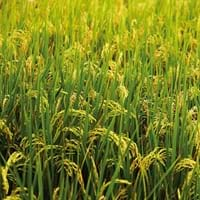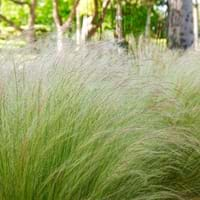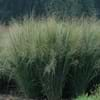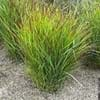Life Span
Annual
Perennial
Origin
Eastern Africa, Northern Africa, Southern Asia, Southeastern Asia
Southwestern United States, Texas, Mexico
Types
Akia Beruin Red, Ofada Rice, Topaz
Not Available
Number of Varieties
Not Available
Habitat
Muddy habitat
driveways, open Woodlands, Roadsides, Rocky areas, Slopes, tree wells
USDA Hardiness Zone
8-15
6-10
AHS Heat Zone
12 - 1
11 - 4
Sunset Zone
Not Available
2b, 3a, 3b, 4, 5, 6, 7, 8, 9, 10, 11, 12, 13, 14, 15, 16, 17, 18, 19, 20, 21, 22, 23, 24
Habit
Clump-Forming
Clump-Forming
Minimum Height
Not Available
Minimum Width
Not Available
Flower Color
White
Not Available
Flower Color Modifier
Bicolor
Bicolor
Fruit Color
White
Non Fruiting Plant
Leaf Color in Spring
Green
Green, Light Green
Leaf Color in Summer
Light Green
Light Green
Leaf Color in Fall
Green
Green, Yellow green, Tan
Leaf Color in Winter
Not Available
Green, Yellow green, Gold, Tan
Leaf Shape
Grass like
Linear
Plant Season
Summer, Fall
Spring, Summer, Fall, Winter
Sunlight
Full Sun
Full Sun, Partial Sun
Growth Rate
Very Fast
Medium
Type of Soil
Clay, Loam
Clay, Loam, Sand
The pH of Soil
Acidic, Neutral, Alkaline
Acidic, Neutral, Alkaline
Soil Drainage
Average
Well drained
Bloom Time
Not Available
Early Summer, Summer
Tolerances
Wet Site, Salt
Drought
Where to Plant?
Ground
Ground
How to Plant?
Seedlings, Transplanting
Seedlings
Plant Maintenance
Medium
Medium
Watering Requirements
Keep plant submerged in water
Do not water excessively
In Summer
Ample Water
Lots of watering
In Spring
Lots of watering
Moderate
In Winter
Consistently
Average Water
Soil pH
Acidic, Neutral, Alkaline
Acidic, Neutral, Alkaline
Soil Type
Clay, Loam
Clay, Loam, Sand
Soil Drainage Capacity
Average
Well drained
Sun Exposure
Full Sun
Full Sun, Partial Sun
Pruning
No need to prune
Requires little pruning
Fertilizers
Fertilize the soil before planting, Phosphorous, Potassium
Apply 12-6-6 fertilizer
Pests and Diseases
Bacteria, Birds, fungus, Nematodes, Rats, Snails, Viruses
Not Available, Red blotch
Plant Tolerance
Salt, Wet Site
Drought
Flowers
Insignificant
Showy
Flower Petal Number
Single
Single
Foliage Texture
Medium
Fine
Foliage Sheen
Matte
Matte
Attracts
Birds
Not Available
Allergy
Not Available
Not Available
Aesthetic Uses
Not Used For Aesthetic Purpose
Landscape Designing, Showy Purposes, small hedge
Beauty Benefits
Good for skin
Not Available
Environmental Uses
Air purification, Prevent Soil Erosion
Air purification
Medicinal Uses
Energy, High blood pressure, Skin Disorders, Swelling
No Medicinal Use
Part of Plant Used
Seeds
Leaves
Other Uses
Starch, Used as a nutritious food item, Used As Food
Used as Ornamental plant
Used As Indoor Plant
No
No
Used As Outdoor Plant
Yes
Yes
Garden Design
Container, Dried Flower/Everlasting, Edible, Herb / Vegetable, Houseplant, Tropical, Water Gardens
Dried Flower / Everlasting, Container, Foundation, Mixed Border, Rock Garden / Wall
Botanical Name
ORYZA
NASSELLA tenuissima
Common Name
Rice
Finestem Needlegrass, Mexican Feather Grass
In Hindi
चावल
Mexican Feather Grass
In German
Reis
Mexikanische Federgras
In French
riz
Mexicaine Herbe Feather
In Spanish
arroz
Pluma hierba mexicana
In Greek
ρύζι
Μεξικού Αστραπή Grass
In Portuguese
arroz
Mexican Pena Relva
In Polish
ryż
Mexican Feather trawy
In Latin
rice
Mexicanus Pluma Grass
Phylum
Magnoliophyta
Magnoliophyta
Class
Liliopsida
Liliopsida
Order
Cyperales
Cyperales
Clade
Not Available
Angiosperms, Commelinids, Monocots
Tribe
Not Available
Stipeae
Subfamily
Not Available
Not Available
Number of Species
Not Available
Importance of Rice Plant and Mexican Feather Grass
Want to have the most appropriate plant for your garden? You might want to know the importance of Rice Plant and Mexican Feather Grass. Basically, these two plants vary in many aspects. Compare Rice Plant and Mexican Feather Grass as they differ in many characteristics such as their life, care, benefits, facts, etc. Every gardener must at least have the slightest clue about the plants he wants to plant in his garden. Compare their benefits, which differ in many ways like facts and uses. The medicinal use of Rice Plant is Energy, High blood pressure, Skin Disorders and Swelling whereas of Mexican Feather Grass is No Medicinal Use. Rice Plant has beauty benefits as follows: Good for skin while Mexican Feather Grass has beauty benefits as follows: Good for skin.
Compare Facts of Rice Plant vs Mexican Feather Grass
How to choose the best garden plant for your garden depending upon its facts? Here garden plant comparison will help you to solve this query. Compare the facts of Rice Plant vs Mexican Feather Grass and know which one to choose. As garden plants have benefits and other uses, allergy is also a major drawback of plants for some people. Allergic reactions of Rice Plant are Not Available whereas of Mexican Feather Grass have Not Available respectively. Having a fruit bearing plant in your garden can be a plus point of your garden. Rice Plant has no showy fruits and Mexican Feather Grass has showy fruits. Also Rice Plant is not flowering and Mexican Feather Grass is not flowering . You can compare Rice Plant and Mexican Feather Grass facts and facts of other plants too.





